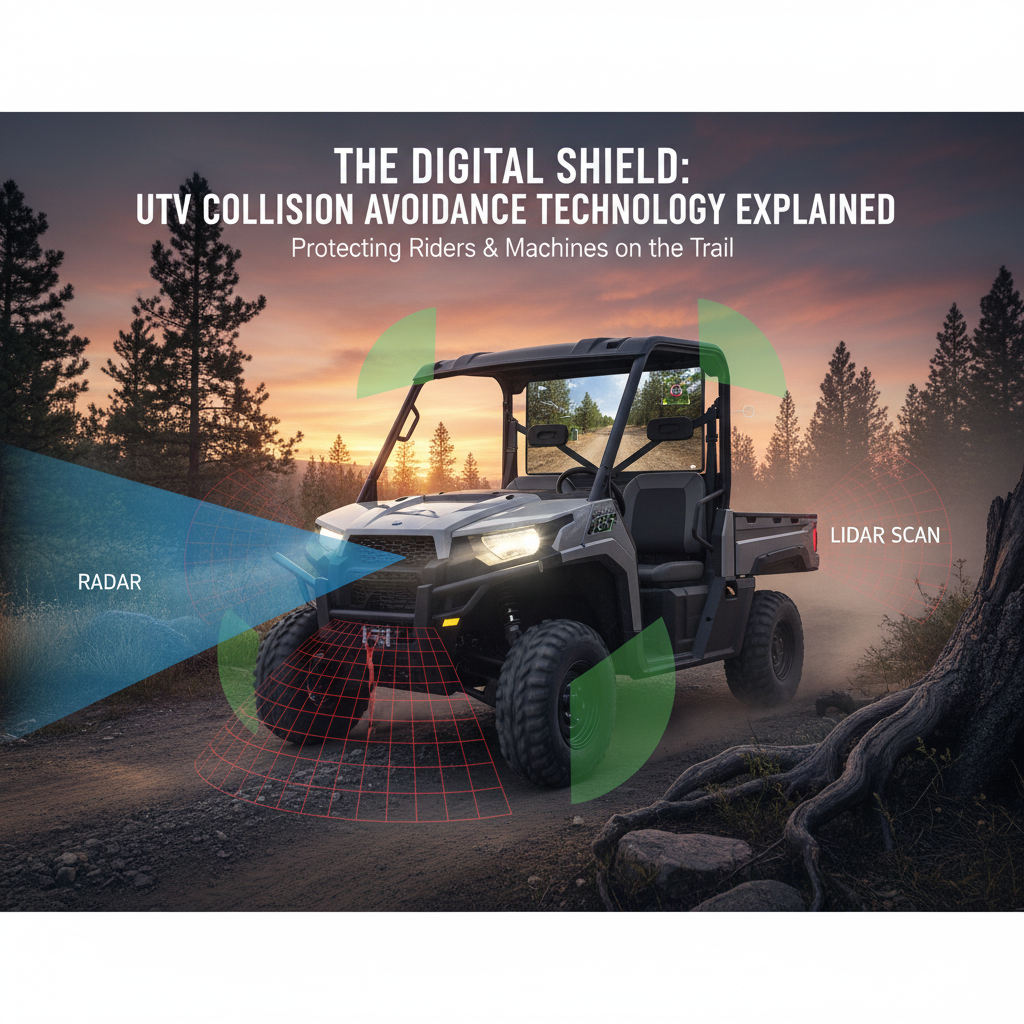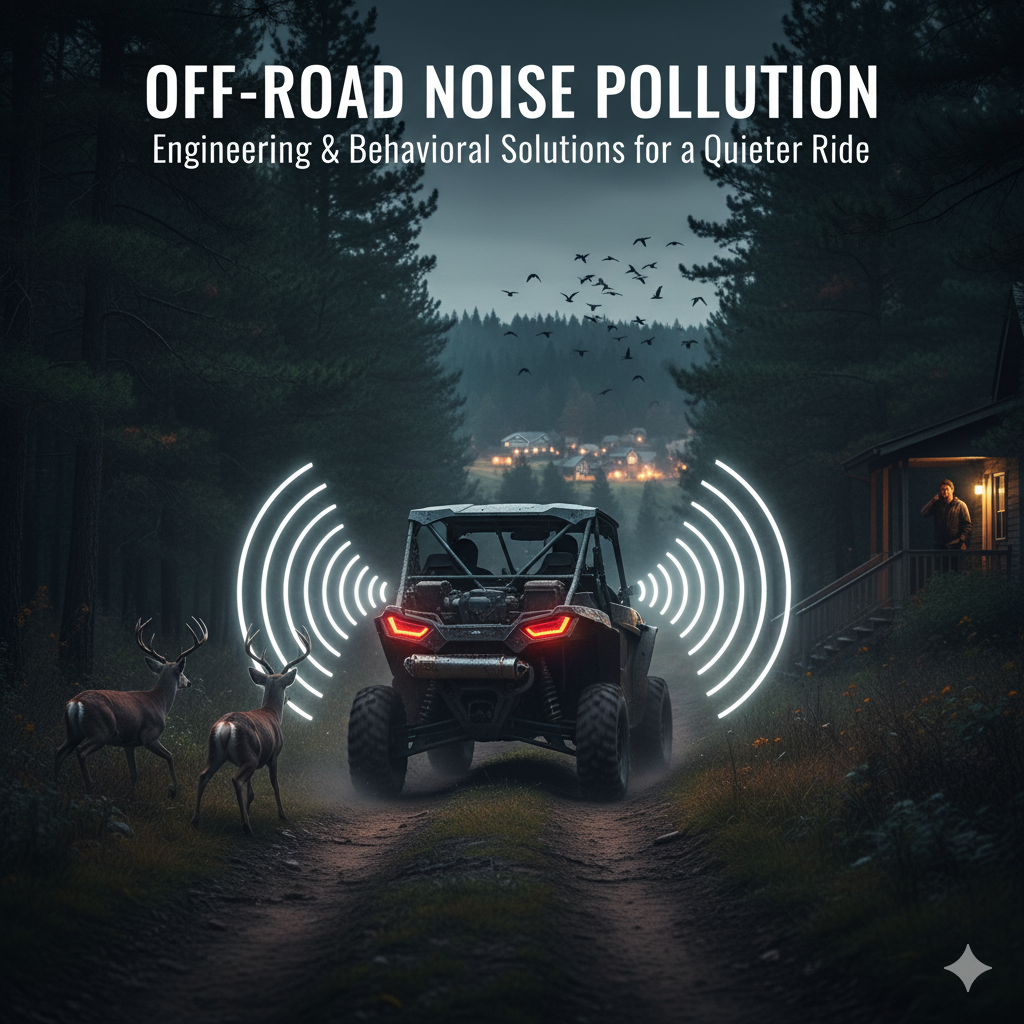Hello, off-road family!
There’s an undeniable magic to the classic Honda three-wheeler, the legendary ATC.
It’s a raw, visceral, and slightly terrifying experience that connects us directly to the origins of powersports.
But let’s be honest: while the spirit is timeless, the technology is… well, it’s from the 70s and 80s.
For the dedicated enthusiast, the challenge isn’t just restoration; it’s modernization.
It’s about taking that iconic, three-wheeled platform and upgrading its core components—engine, suspension, brakes, and safety—to meet the performance and reliability standards we now expect from a machine like the Honda Pioneer.
This process of modernization is more than a hobby; it’s a design exercise.
It shows us how far Honda’s engineering has come, and it highlights the key innovations that make the Pioneer the incredible machine it is today.
Let’s dive into the essential upgrades that transform a vintage ATC into a modern marvel.
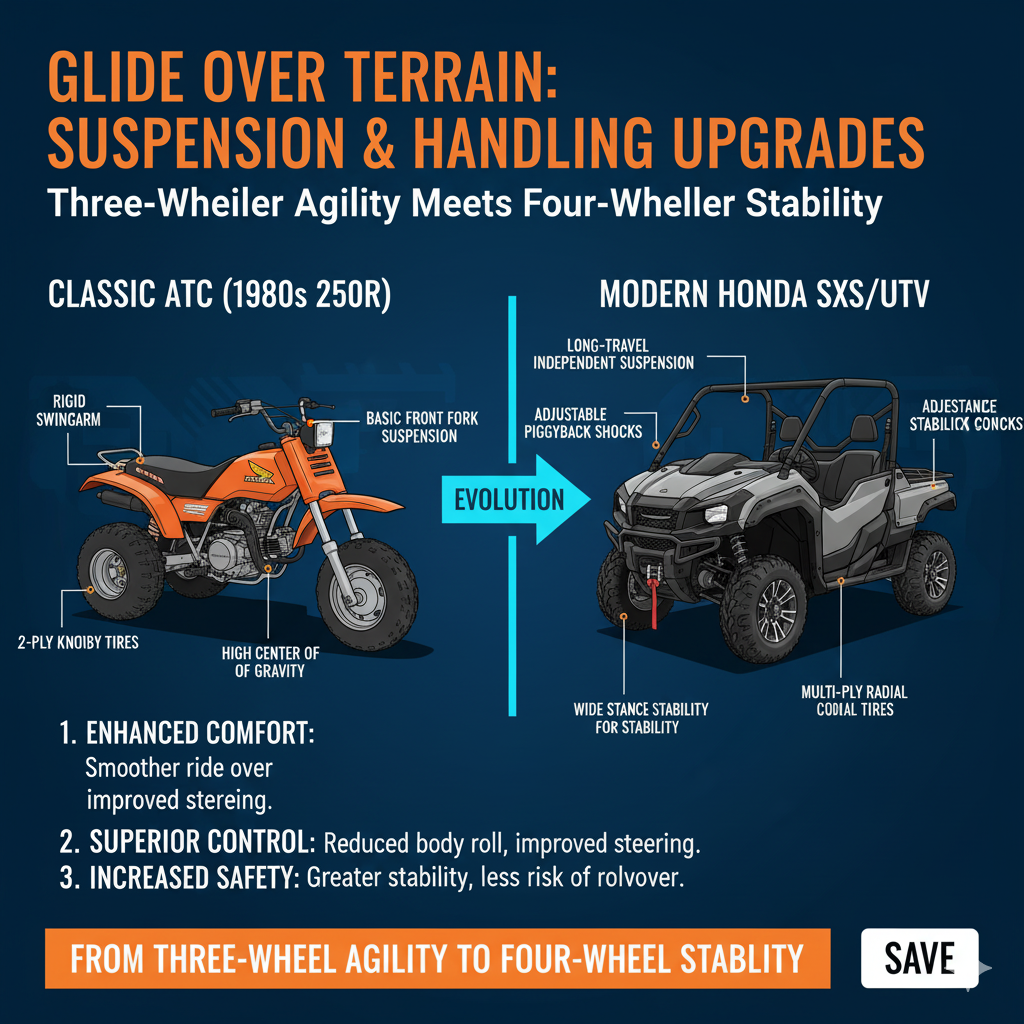
The Engine: Powering the Past with the Future
The original ATC engines were simple, air-cooled workhorses.
To truly modernize, we need to address power, reliability, and, critically, emissions.
1. Engine Swaps & Fuel Injection
- The Swap: The most popular modernization is an engine swap. Enthusiasts often look to modern, single-cylinder, liquid-cooled engines from Honda’s CRF dirt bike line or even later-model FourTrax quads. A common choice is a reliable, modern 450cc four-stroke. This immediately boosts horsepower and torque, making the machine much more capable on modern trails.
- Fuel Injection Conversion: Ditch the carburetor! A modern Electronic Fuel Injection (EFI) system is the single best upgrade for reliability. It eliminates jetting issues, provides instant cold starts, and automatically compensates for altitude changes. This is a technology that is standard on every Honda Pioneer and is a non-negotiable for a modern machine.
| Component | Vintage ATC (1980s) | Modernized ATC (2020s) | Pioneer Standard |
|---|---|---|---|
| Fuel System | Carburetor, manual choke | Electronic Fuel Injection (EFI) | Programmed Fuel Injection (PGM-FI) |
| Cooling | Air-cooled | Liquid-cooled (via engine swap) | Liquid-cooled |
| Ignition | CDI, kick/pull start | Electric start, modern ECU | Electric start, advanced ECU |
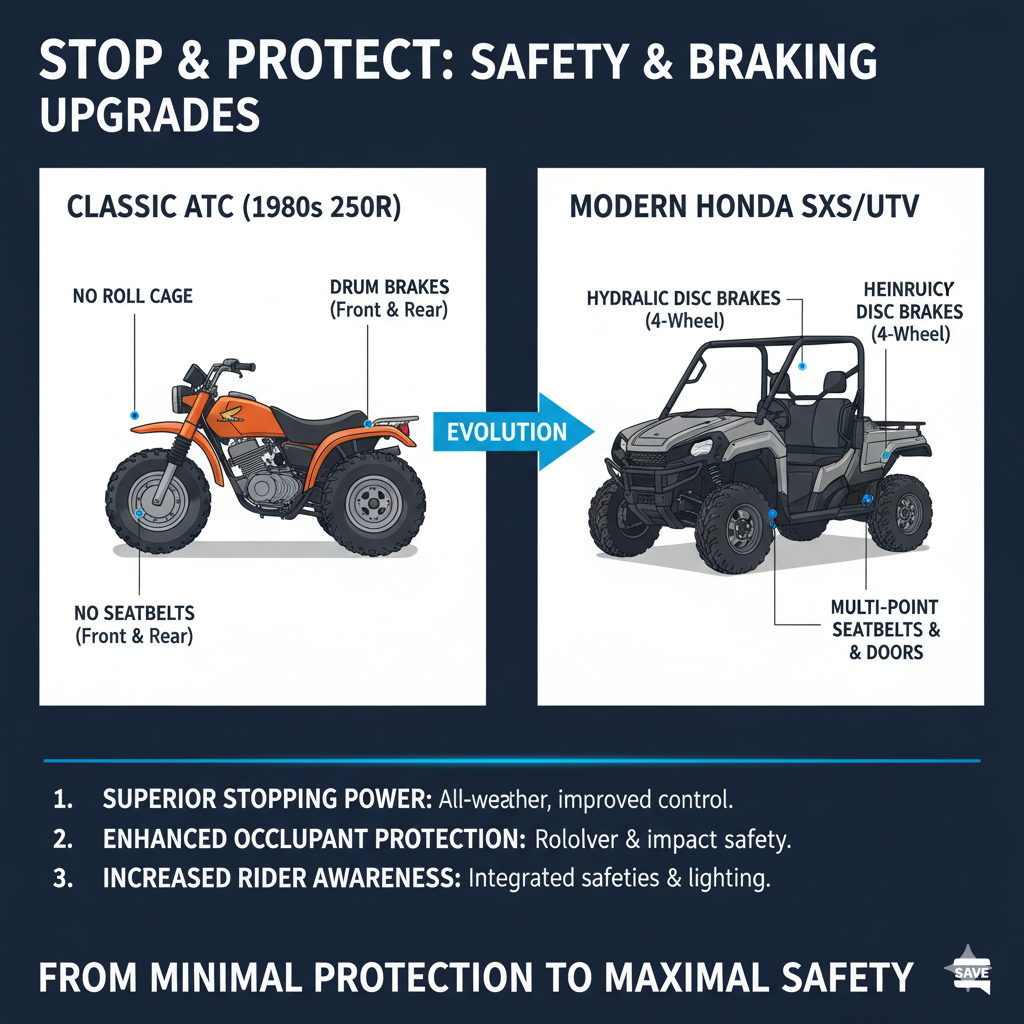
Suspension: From Pogo Stick to Plush Ride
The suspension on early ATCs was notoriously rudimentary.
The front was often a rigid fork or a basic telescopic unit, and the rear was either a swingarm with a single shock or, on the earliest models, a rigid axle.
This is where the biggest performance gains are made.
2. Long-Travel Conversion
- Front End: A common modification is adapting the front suspension from a modern sport quad. This involves custom triple clamps and long-travel shocks. The goal is to achieve 8-10 inches of travel, a far cry from the original 4-5 inches.
- Rear Shock Upgrade: Replace the aging, single rear shock with a high-performance, fully adjustable unit from a company like Fox or Elka. These shocks offer compression and rebound damping adjustments, allowing the rider to truly tune the ride for modern trail conditions.
Pioneer Connection: The Honda Pioneer’s independent rear suspension (IRS) and high-quality shocks are the direct result of decades of suspension R&D.
The goal of ATC modernization is to mimic that plush, controlled ride, even on a three-wheeled platform.
Safety and Control: Stopping and Seeing
The single most critical area for modernization is safety.
The original drum brakes and dim headlights are simply inadequate for today’s trail speeds.

3. Hydraulic Disc Brakes
- The Upgrade: Replace the original cable-actuated drum brakes with a full hydraulic disc brake system on all three wheels. This requires custom hubs and caliper mounts, but the result is a massive increase in stopping power and modulation.
- Why it Matters: The Pioneer features powerful hydraulic disc brakes on all four wheels. This level of control is essential for safe operation, especially at higher speeds. A modernized ATC must have this upgrade.
4. Modern LED Lighting
- The Upgrade: Replace the 35-watt sealed beam headlight with a modern, low-draw LED light bar or pod lights. This not only increases visibility for the rider but also makes the machine more visible to others.
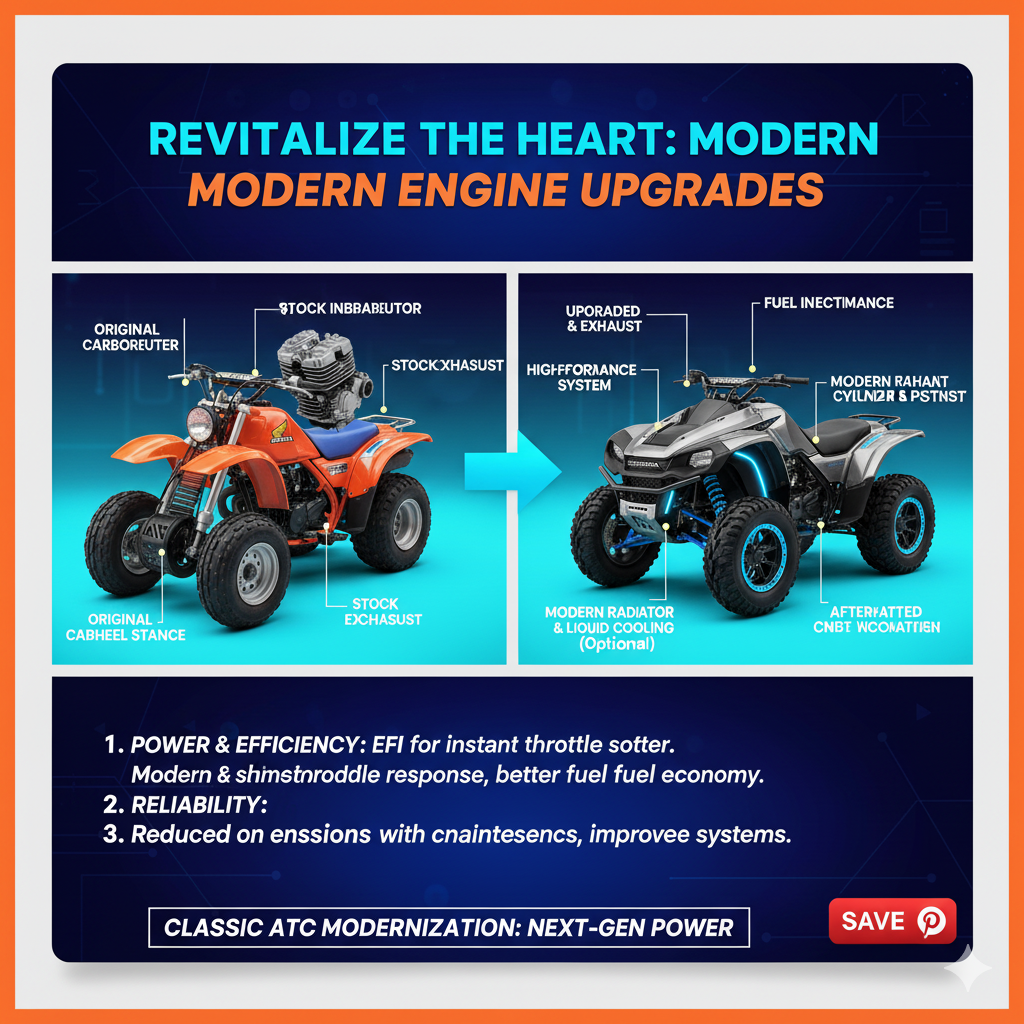
- Aesthetics: You can maintain the classic, round headlight look by using a modern LED insert, giving you the best of both worlds: vintage style with modern performance.
The Philosophy of Modernization
Modernizing a classic ATC is a philosophical statement.
It says that we respect the machine’s history, but we demand modern performance.
It’s a fusion of nostalgia and innovation.
- The “Why”: Why go through all this effort when you could just buy a new Pioneer? Because the three-wheeler offers a unique, engaging, and challenging ride that a four-wheeler can’t replicate. The modernization process allows us to keep that unique experience while making the machine safer and more reliable.
- The “How”: The process is a testament to the custom fabrication skills of the off-road community. It involves welding, machining, and a deep understanding of vehicle dynamics.
The ultimate irony is that by modernizing these classic machines, we are essentially applying the same principles that Honda used to create the Pioneer: take a proven platform and relentlessly improve it with the latest technology.
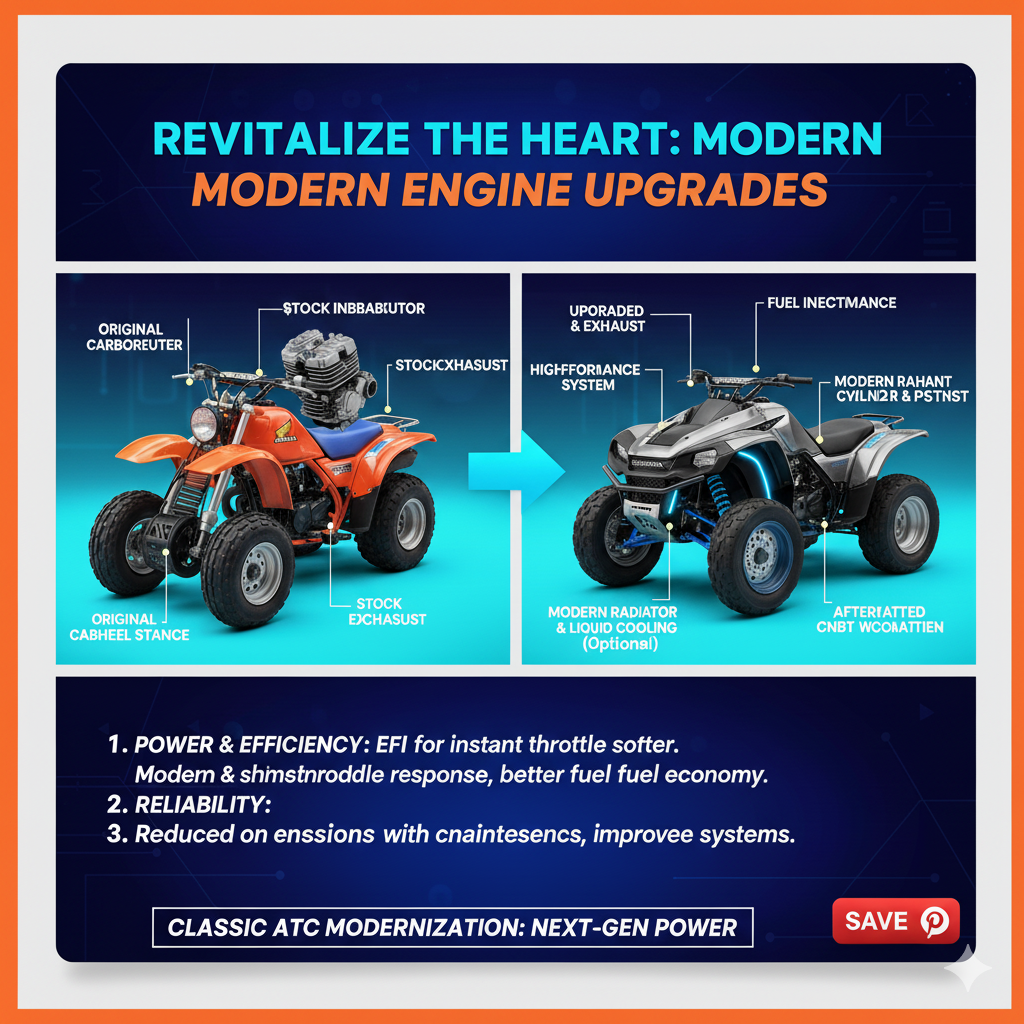
The Pioneer is the four-wheeled, side-by-side embodiment of this modernization spirit, a machine that is constantly being refined and upgraded to meet the demands of the modern off-road environment.
So, if you have an old ATC gathering dust in the barn, don’t just restore it to museum quality.
Modernize it.
Give it the power, the brakes, and the suspension it deserves.
Bring that legendary three-wheeled spirit into the Pioneer era.
References & Further Reading
- The Ultimate ATC Restoration Guide [1]
- Engine Swaps for Classic ATCs [2]
- Performance Suspension Upgrades for Three-Wheelers [3]
- Honda Pioneer Technology: PGM-FI and Suspension [4]


